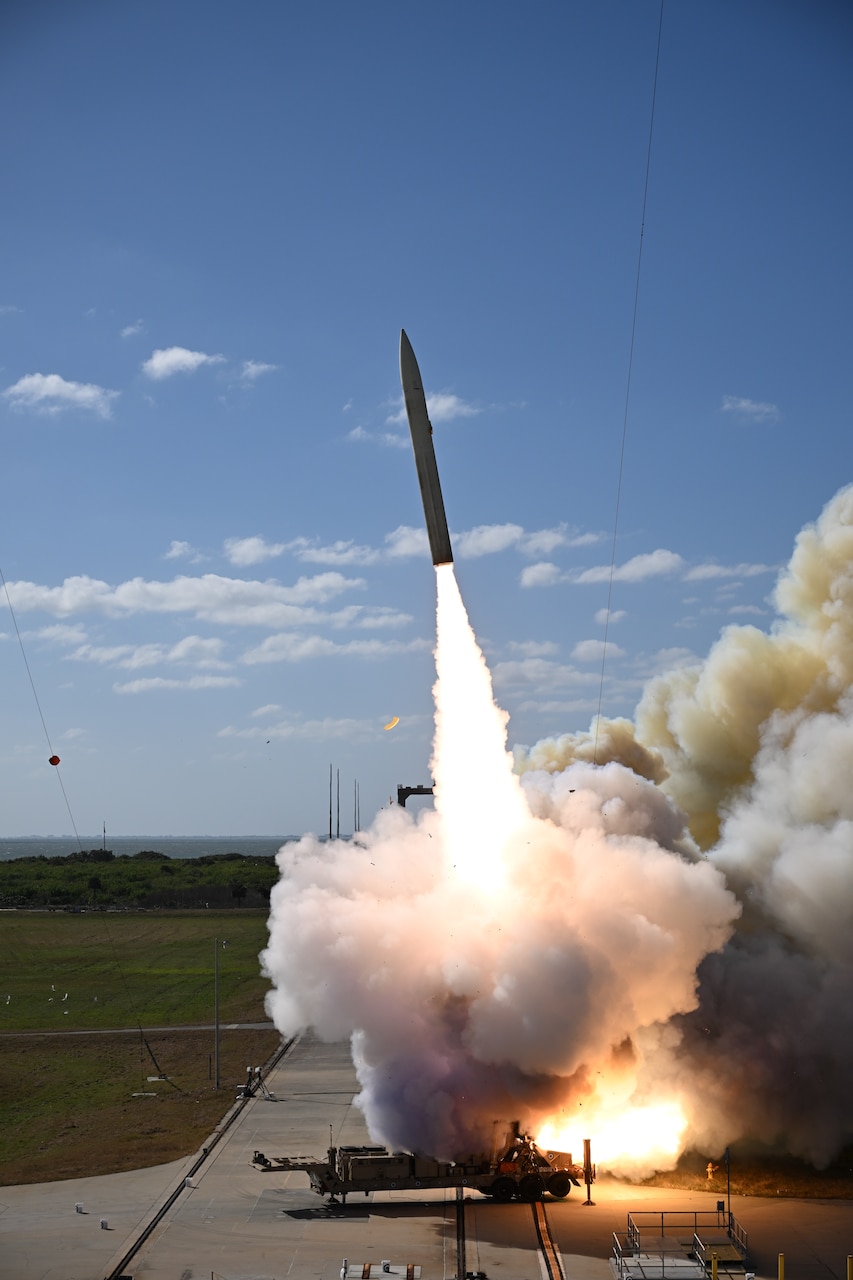The U.S. Army's Rapid Capabilities and Critical Technologies Office, in collaboration with the U.S. Navy Strategic Systems Programs, recently completed a successful end-to-end flight test of a conventional hypersonic missile from Cape Canaveral Space Force Station, Florida.
"This test builds on several flight tests in which the Common Hypersonic Glide Body achieved hypersonic speed at target distances and demonstrates that we can put this capability in the hands of the warfighter," said Secretary of the Army Christine Wormuth.

Missile Launch
This is the second successful end-to-end flight test of the All Up Round (AUR) this year and was the first live-fire event for the Long-Range Hypersonic Weapon system using a Battery Operations Center and a Transporter Erector Launcher.
"This test marks an important milestone in the development of one of our most advanced weapons systems. As we approach the first delivery of this capability to our Army partners, we will continue to press forward to integrate Conventional Prompt Strike into our Navy surface and subsurface ships to help ensure we remain the world's preeminent fighting force," said Secretary of the Navy Carlos Del Toro.
Information gathered from this test will support the first Army Operational Deployment of the common hypersonic AUR, as well as a Navy sea-based fielding.
"This test is a demonstration of the successful Navy and Army partnership that has allowed us to develop a transformational hypersonic weapon system that will deliver unmatched capability to meet joint warfighting needs," said Vice Adm. Johnny R. Wolfe Jr, Director, Navy's Strategic Systems Programs, which is the lead designer of the common hypersonic missile.
The Services common hypersonic AUR supports the National Defense Strategy and will provide combatant commanders with diverse capabilities to sustain and strengthen integrated deterrence and to build enduring advantages for the Joint Force.
Hypersonic systems – capable of flying at speeds greater than five times the speed of sound (Mach 5) –provide a combination of speed, range, maneuverability, and altitude that enables highly survivable and rapid defeat of time-critical and heavily-defended targets.
"The responsiveness, maneuverability and survivability of hypersonic weapons is unmatched by traditional strike capabilities for precision targeting, especially in anti-access/area denial environments," said Lt. Gen. Robert A. Rasch, Director of Hypersonics, Directed Energy, Space and Rapid Acquisitions for RCCTO.
The U.S. Army RCCTO and U.S. Navy SSP programs are partnered to rapidly field land and sea variants of a hypersonic weapon system that will meet critical joint warfighting needs. The use of a common hypersonic missile and joint test opportunities allow the Services to pursue a more aggressive timeline for delivery and realize cost savings. The collaboration between RCCTO and SSP enables the Services to stay ahead of emerging threats and maintain a decisive advantage on the battlefield.






